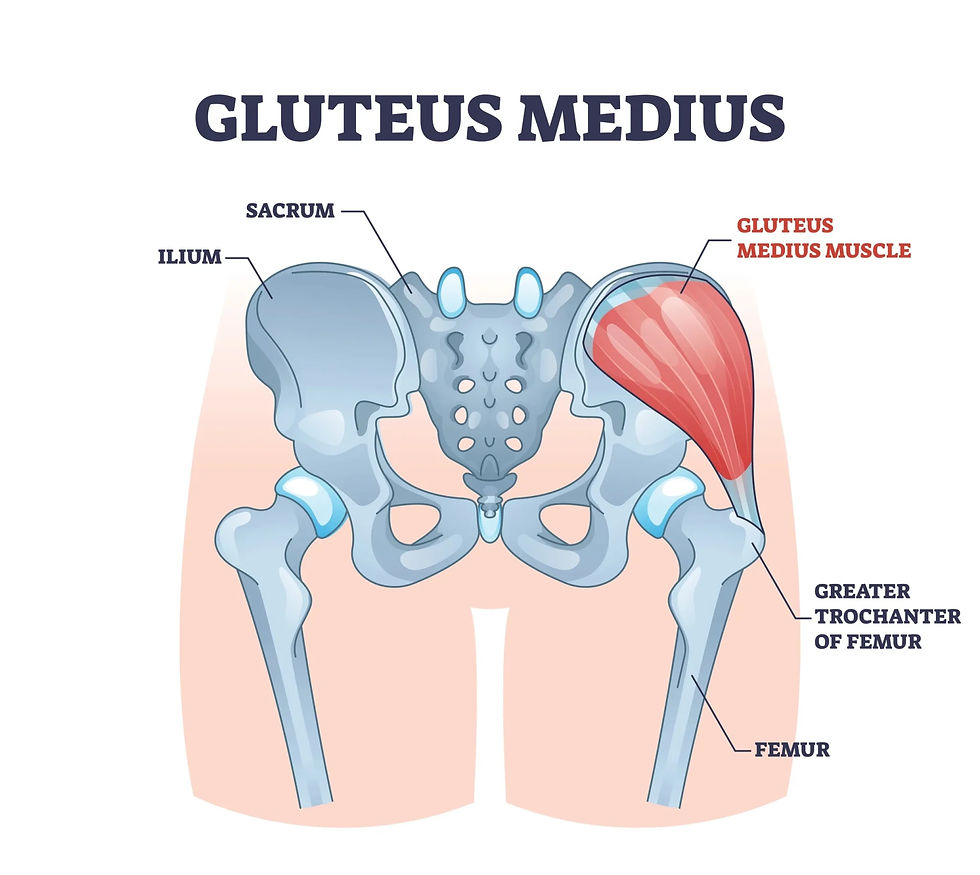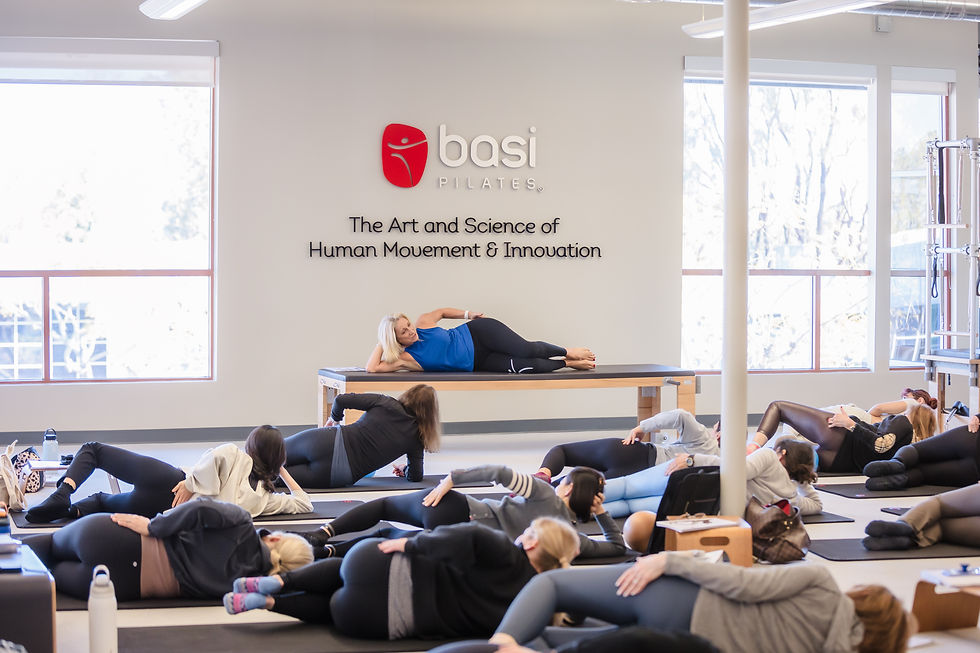Muscle of the Month- Gluteus Medius
- samantha155
- Aug 7
- 2 min read
It's Muscle of the Month time, and March is all about the Gluteus Medius! Get ready to learn about this essential hip stabilizer that plays a crucial role in walking, running, and nearly all lower body movements.
Gluteus Medius: Your Hip's Hidden Stabilizer
The gluteus medius may not get as much attention as its more famous neighbor (the gluteus maximus), but this mighty middle glute is truly the unsung hero of hip stability and functional movement. When it's working well, you move with balance and control - when it's weak, your entire walking pattern can change.
Anatomy: Positioned for Stability
The gluteus medius is a fan-shaped muscle located on the outer surface of your pelvis:
* Originates on the outer surface of the ilium (the large, wing-shaped bone of your pelvis)
* Lies underneath the gluteus maximus at its posterior portion
* Attaches to the greater trochanter of the femur (the bony prominence on the outside of your thigh bone)
The muscle has three distinct parts - anterior (front), middle, and posterior (back) fibers - allowing it to perform different actions depending on which fibers are activated.

** Actions: The Lateral Powerhouse
Your gluteus medius is responsible for:
------------------------------------------------------------
1. Hip abduction (moving your leg away from the midline of your body)
2. Hip stabilization during single-leg stance
3. Internal rotation (anterior fibers)
4. External rotation (posterior fibers)
Why It Matters: The Foundation of Functional Movement
A strong, properly functioning gluteus medius is essential for:
* Maintaining level hips when walking or running
* Providing stability when standing on one leg
* Preventing excessive inward collapse of the knee during squatting movements
* Supporting proper body alignment during daily activities
* Creating power for lateral movements in sports and exercise
When Things Go Wrong: The Telltale Signs
When your gluteus medius is weak or not firing properly, several problems can emerge:
* Trendelenburg gait (hip drop when walking)
* Increased risk of knee pain and injury
* Greater strain on the lower back
* Lateral hip pain (e.g. greater trochanteric bursitis, gluteal tendinopathy, gluteal tear)
* Decreased athletic performance
* Balance issues, especially on uneven surfaces

Strengthen Your Hip Guardian: Quick Exercise Guide
Ready to show your gluteus medius some love? Check out this video for a few of my favorite simple exercises to target and strengthen this vital muscle.
Unlike last month's piriformis (which often needs stretching), the gluteus medius typically benefits from targeted strengthening exercises to improve hip stability and function.

💪 Pro tip: When strengthening your gluteus medius, focus on quality over quantity. Slow, controlled movements with proper form will activate this muscle more effectively than rushed repetitions.

Looking for more ways to improve hip stability? Visit my website for additional videos! * Real-life rehab techniques * Injury spotlight series * Curated exercise classes * Free Pilates exercise demonstration videos from my book, Pilates for Rehabilitation and my BASI advanced education course, Pilates for Injuries & Pathologies ============================================================
Your Input Matters! What difference have you noticed when working on your own hip strength? Or when focusing on increasing hip strength for clients with knee or back pain? Reply to this post and share your experience – you might inspire others in our community!







Comments